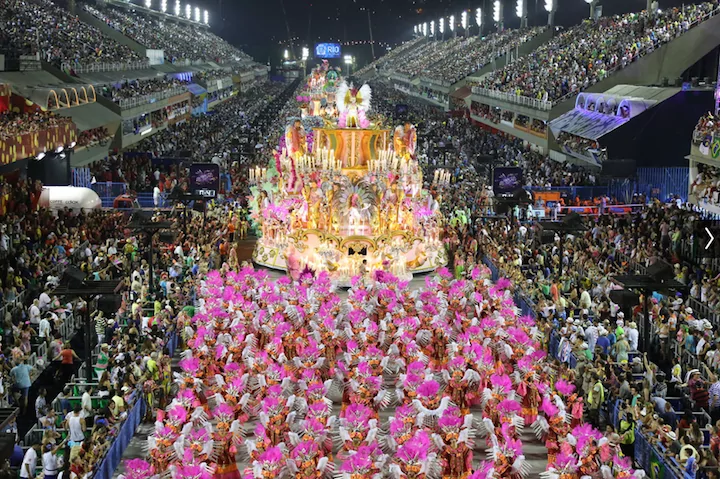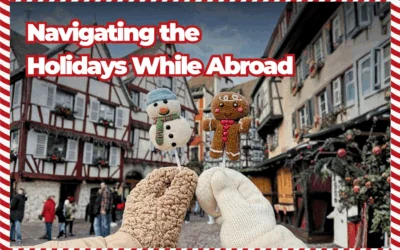In this post of API’s “Cultural Connections” series, we take a look at the history and traditions of Rio’s famous Carnaval celebrations!
Mention the city of Rio de Janeiro to anyone, and they can probably tell you one thing about it: it’s the home of vivid and frenetic Carnaval celebrations each year.
Quick history lesson: the tradition of Carnaval was brought to Brazil by Portuguese settlers. Though it started small with dances and parades, it wasn’t organized into the “Samba Schools” we know now until the 1920s. Parades took place in the streets of Rio until 1984, when the “Sambódromo” was opened. This is an immense stadium with the tall stands of seating bookending a long center aisle where the parades take place.

The Sambódromo “at rest”.
Some of the most well-known Samba Schools (Escolas de samba) that are part of 2017’s “Special Group” include Beija-Flor, Mangueira, Mocidade, Portela, Salguiero, Unidos da Tijuca, Vila Isabel, and more; each is linked to a specific neighborhood/ community in Rio. Each Escola usually has a samba “hall”, which serves as the administrative and social center for the group, and the larger schools also have a separate production area to build the giant floats and amazing costumes featured in the Carnaval parade each year. There are more than 70 Samba Schools in Rio, but only these 12 “Special Group” schools have the right to parade through the Sambódromo on the two most important nights of Carnaval. Schools not in the Special Group parade the week before the two big nights, some of them in the Sambódromo and some in the streets.

The Sambódromo with a “Special Group” parade in progress.
A typical parade for the “Special Group” includes 3,000 to 5,000 participants, divided into different sections: the Comissão de frente (including the flag-bearer, Mestre sala, etc.), the different Alas (each consisting of 100+ members all wearing the same costume), Passistas (the star dancers of Carnaval and the women most associated with the glamour), Bahianas (honoring Afro-Brazilian traditions), the Velha Guarda (literally the “Old Guard”), the Bateria (the drum corps), and 6-8 GIANT floats. The parade usually lasts between 60-75 minutes, during which time all of the above artists march through the center aisle of the Sambódromo, singing their school’s current theme song (called the enredo) at the top of their lungs.
The scoring system for Carnaval is beyond complex, so we’re going to leave that aside in this post.
How do we know all this? API’s Director of Experiential Programs, Vija G. Mendelson, is a member of the Austin Samba School here at home and travelled to Rio to parade with Mangueira in Carnaval in 2014! It just goes to show that you never know where study abroad will lead you some years down the road…

Look at this crazy costume! In the “Ala Anjo do Cortejo do Divino”
Rio is a fascinating city at any time of year! First you can get your fill of watching Carnaval online later this week — the big nights are February 26th and 27th, and you can live stream all the parades on the Carnaval section of O Globo’s website here: http://g1.globo.com/. After that, consider planning your own trip to Rio to volunteer with one of API’s wonderful projects, and make your own dreams come true in Rio!





